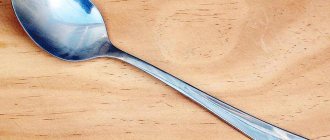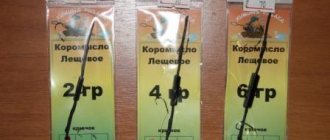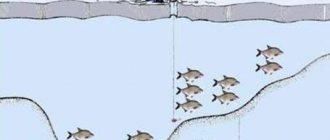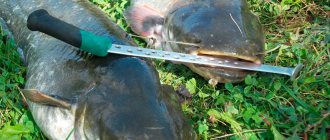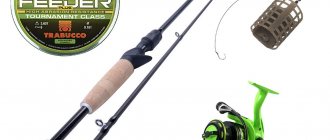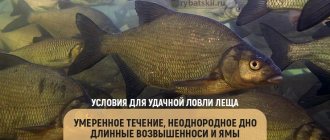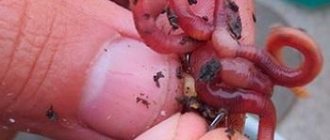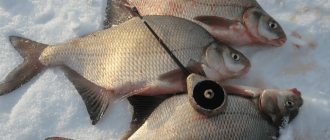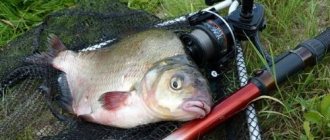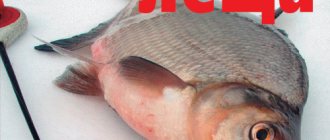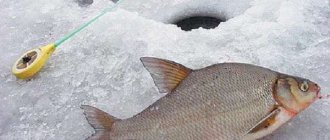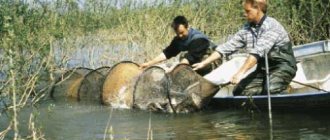Baits and lures
We are talking about two types of bait: plant and animal origin. Each of them is used separately at a certain time or forms a combination, the so-called sandwich.
Nozzles of animal origin
This type of nozzles includes:
- Bloodworm.
- Worm.
- Maggot.
- Shell meat.
Options with bloodworms
Plant based attachments
Often used when feeder fishing:
- Canned corn.
- Pea mastyrka.
- Steamed pearl barley porridge.
Worm and bloodworm bait
You can use different combinations and combinations of baits, as shown in the photo.
Equipment of a float rod for bream
The use of float tackle when fishing for chebak is characterized by a high catchability rate, the main thing is to understand that the object of fishing is not suitable for the coastal zone, the tackle must have the appropriate length.
The best option for a float fishing rod is a plug blank , with its help you can fish a selected square in a pond and deliver the bait as accurately as possible. It is quite acceptable to use Bolognese and fly rods.
Feeder equipment
The equipment in question is a feeder with a hook located next to it. There are several types of feeder installation for bream, which we will discuss below.
Paternoster
The loop, and this should be a symmetrical option, is knitted on both sides. You need to keep the length the same. On one side it is attached to the main fishing line. A leash is placed on the other thread.
500 mm of thread is unwinded, which needs to be folded in half. A 20-30 mm loop is mounted at the ends. One end is placed with carbine swivels, which are connected to the main line with a knot. A feeder is mounted on the carbine. The loop should be approximately 200 mm in size.
The photo shows the Paternoster loop.
Gardner's loop
This option is simple but effective. It can be performed by a novice fisherman. But you need to take into account that after making a series of casts, the line may twist. These must be constantly monitored and the feeder can be untwisted. When the twist constantly interferes with the normal fishing process, monofilament fishing line can be replaced with braided line.
The photo shows a Gardner loop with recommended dimensions
Asymmetrical loop
The asymmetrical version of the tackle is almost identical to the symmetrical loop. The exception is that one of the sides is longer. This increases the angler’s chances of noticing in time that someone is interested in his bait, before the fish feels the weight of the feeder.
Photo of an asymmetrical loop.
Symmetrical loop.
This option involves knitting fishing line on both sides and compliance. The carabiner is mounted to the main fishing line. I tie leashes to the other side.
Photo of a symmetrical loop
How to choose a feeder tackle for bream
There are a huge number of different ways to catch bream. These can be casts, when the rod is not used at all, and donkeys, where heavy rods are a priority. But it is amateurs and professionals who catch bream on the feeder. This is a generally accepted fishing method in which a large number of hooks are not used and the result mainly depends on the angler’s ability to notice the bite and hook it in time. The selection of gear, installation and everything else requires a lot of attention.
First you need to decide on the bream feeder gear that will be used. Depending on the conditions, a rod with the required test and length is selected. If fishing involves making long casts due to the fact that the fish is standing on the far edges, a feeder less than 360 centimeters long should not be considered. When fishing at short distances, a feeder length of 300-330 centimeters is quite enough.
Bream feeders usually have interchangeable tips to make the rod more versatile. Often the kit includes 2-3 tips of different tests.
Most standard test ranges:
- up to 60 grams;
- 60-90 grams;
- 90-120 grams;
- over 120 grams.
There is also a separate class of feeder rods called pickers. They are used when fishing on lakes, using the lightest feeders in the region of 20-30 grams. These rods have a very thin and sensitive blank.
Feeder and coil selection
Feeder rods have a large number of rings, due to which the load on the blank is distributed more evenly. When choosing, you should pay attention to the size of the rings themselves, because when fishing in winter they will freeze and this will begin to cause very great difficulties when fishing.
You should take a more powerful reel. Still, it will bear a large load when casting heavy feeders. A spool capacity of 4000-5000 is quite enough. It is better to always take it with a reserve, since the angler will always have time to reel in the backing, but if there is not enough spool, then the reel will have to be changed.
Reels with baitrunners are used when catching worthy specimens, which can easily deprive a person of expensive fishing rods. By turning on the baitrunner, a person gives the fish the opportunity to freely release the line. This function of the reel is great for carp fishing or during night fishing, when the fisherman is not near the rods and needs time to catch a bite. And, of course, no one wants to go into the water after them if a large fish steals the gear.
Braided cord or fishing line
Whether to use a cord or fishing line is a personal decision for each individual. There are advantages everywhere. The cord practically does not stretch, and all bites will be more clearly transmitted to the top of the feeder, but when fishing, the chance of it disappearing will be increased, so it is better to use such a thing as a feeder. This is a special elastic band that is very elastic and, when fishing, absorbs all the jerks of the fish. The optimal cord thickness is around 0.16 mm.
Read more about which fishing line is best for feeder fishing and why.
The line will be a little thicker. This is due to the fact that the thread, compared to the cord, has less tensile strength. Due to the fact that the fishing line will be thicker, the casting distance will also decrease, but it will absorb shock during fishing. The fishing line also has the advantage of transparency, but in this situation, opinions also differ and many believe that the braided cord does not affect the fish in any way and does not scare it away.
Bait for bream
A big role in catching a trophy is given to such an element as bait. Today there is no ready answer to how to attract bream to the feeding area. Everyone chooses their own option. But we can suggest tactics for choosing the right bait, which should correspond to the conditions in which the fisherman finds himself. Bait recipes for bream.
One of the bait options.
Color
Bream sees quite well and distinguishes colors. Therefore, he may be attracted to unusual colors. In the fall, gray, black, brown or dark red colors work well. In spring and summer, fish react to yellow, green and red colors of food.
When experimenting with color, it is necessary to take into account the transparency of the water, weather conditions and the soil located at the bottom of the reservoir. TOP best barometers for fishing.
The fisherman's arsenal must contain color pigments, at least several options.
Multi-colored bait
Consistency
Depending on the chosen fishing location, the consistency of the bait is selected. On the river it should be dense. It should not be quickly washed out of the feeder in a fast current. When fishing for bream in still water, more crumbly bait is used. When it falls to the bottom, it should immediately create a cloud of flavor and attract fish to this place.
Smell
This is one of the decisive factors when feeding fish. Sweet confectionery aromas are considered to work stably. And also the smells of peas and corn.
Store-bought bait
The manufacturer is actively working on creating combinations using new ingredients. On the packaging you can always find information from the manufacturer about the weight, composition of the product and the method of its preparation.
Store-bought bait for bream
Homemade.
This option for making bait at home is kept secret. Fishermen almost never talk about how they prepare their own bait. They are confident that their product will attract schools of bream to the feeding table. Most often, steamed pearl barley, peas, and semolina are prepared. You can also make a flat feeder yourself.
We recommend watching the video. How to make bait for bream at home.
five bait recipes for catching bream
Gear device
Bottom tackle is often the first choice for bream fishing for novice anglers. This is explained by the cheapness and availability of components, with decent catchability of the gear as a whole.
[THERE IS AN ANSWER] How to catch bream on a feeder
Donka for bream consists of the following components:
- rod;
- coil;
- braid or fishing line;
- leashes;
- hooks;
- thin wire rocker;
- a feeder with an anti-twist (the most complex, but very catchable type of equipment).
On a note! Using a rocker allows you to fish with two hooks at the same time, completely avoiding tangling the leashes with each other. It is necessary to measure the length of the leashes so that the hooks do not touch or barely touch each other.
You can assemble such tackle from almost any spinning rod and reel. The rod test is selected according to the expected weight of the equipment, which depends on the depth and presence of current.
A common mistake that beginners make is using rods that are too powerful. This affects the flight range and sensitivity of the gear.
A braided cord or an ordinary nylon fishing line is used as the main fishing line. There is no point in reducing the diameter of the fishing line. For the most part, the fish sees it lying on the bottom and is not afraid at all. For bream, even trophy size, a cord thickness of 0.2 or 0.4 mm monofilament is sufficient.
Given the relatively frequent snags, a strong line provides a significant advantage. It allows you to save the donkey equipment. In addition, a really large bream, weighing 3-5 kg, often “sits” on the bottom.
A medium-sized stationary reel is complemented by fishing line with a diameter of 0.2 mm. Leashes of 0.16 mm with hooks No. 4, 5 and 6 should be about 80 cm long. The feeding basket can be made of wire or plastic with open parts on both sides. In the latter case, you will need to weigh it down with a lead strip weighing 20-30 g.
Bream is a schooling fish, so every fisherman has the opportunity to lure it to a place in large quantities. And for this, fishing with a basket feeder is best suited.
Most often, bream is found in the lower reaches of rivers, in calm and deep water. These places are even called reaches or bream backwaters. It is here that the bream finds ideal living conditions. In lakes, this type of fish also prefers to live in deep-sea areas. Large fish are found at a sufficient distance from the shore. The latter fact is an additional argument in favor of catching bream with a feeder.
Bite alarms – what to choose?
For gear for bream, it is best to take a medium-sized bottom rod, which is suitable for a thrown load weighing 20-50 grams. The bottom rod is equipped with a bite alarm. In this case, you should give preference to a special feeder rod, which is suitable for fishing with a basket feeder and is distinguished by its high strength for throwing the feeder and the presence of bite alarms in the form of sensitive, replaceable whips.
A medium-sized stationary reel is complemented by fishing line with a diameter of 0.2 mm. Leashes of 0.16 mm with hooks No. 4, 5 and 6 should be about 80 cm long. The feeding basket can be made of wire or plastic with open parts on both sides. In the latter case, you will need to weigh it down with a lead strip weighing 20-30 g.
The fastening of the leash and the feeding basket is very important. The basket should help transfer bites from the hook to the top of the rod. Reliable and simple fastening of the feeder and leash is shown in the figure.
You need to feed correctly
An important condition for successful bream fishing is their proper bait. The food should stay firmly in the basket (use larvae as live food). At the same time, once at the bottom, the food should be well washed out of the feeder.
How to achieve this balance? To do this, press the food into the basket with your index finger and thumb and lower it into the water near the shore to check how quickly it will wash out.
Make several casts of the feeder with food in the same place. As a guide, select some large and stationary object (a tree, a house) and remember the constant casting distance by fixing the line on the reel clamp.
Choosing baits for bream
Next, attach the leash and put the bait on the hook. As a bait, you can use 4-5 larvae, hook No. 5, or red worms and larvae with hook No. 6. Bream especially like pupated larvae. While small fish happily attack the larvae, large bream prefer canned corn.
Once the feeder is in the right place, reel in the extra net, place the rod on the stand and tighten the line so that the whip bends slightly.
If you are fishing for bream in a pond with still water, the top of the rod should be slightly tilted down so that the wind does not pull on the line.
Top in the spotlight
There is another method of biting, which is most often used on the river. After a slight initial shake or no warning at all, the tip may quickly tilt back. This means that the bream has lifted the feeder from the bottom and is swimming against the current with the bait in its mouth. At this point you should make the hook as quickly as possible.
Time, place, depth
January March. Not a very good period for catching bream. The fish are found in dense schools in the deepest parts of the reservoir. On thaws and sunny days, the fish occasionally feed on the shore. You can try fishing at lunchtime for small portions using baits on sensitive and thin gear.
April May. The most successful period for catching bream. During this period, the fish replenishes its energy reserves for future spawning. Early in the morning the fish goes into shallow water, where the water warms up. With the advent of the bright sun, the fish again go to depth. During this period, it is best to fish on river beds and in deep interstitial spaces.
June. From late May to mid-June there is a good bream bite. During this period, especially large fish often lose caution and fear. During spawning, it is better to leave bream alone.
July August. A good period for bream fishing is coming again. During spawning, the bream become very hungry and become very active again. As the water warms up, the fish move to the fast current. In lakes in the summer it is difficult to find a place where bream accumulate, since they often rise up from the bottom. Look for eroded shore edges and small underwater elevations on the water.
[THERE IS AN ANSWER] How to equip a feeder with a feeder for bream
September October. Breams store up for the winter, so they are very active. Choose the same fishing places as in the spring. As the temperature drops, their desire to feed decreases.
November December. Bream go to winter. Everything depends on weather conditions. The fishing results are approximately the same as in January or October.
Look at the video to see how clearly the technique of catching bream with a feeder looks.
An unknown HTTP error occurred. Please examine shortstop's debug output for further details
5) I also recommend re-casting the tackle every 3-4 minutes during the first hour of fishing.
Fishing with a feeder in still water
Fishing for bream in still water is almost the same for a lake, pond, or reservoir. The most important components in this situation can be considered the correct choice of fishing location and the bait used.
The specificity of fishing in still water is the delicacy of using bait.
Since there is no flow, it is necessary to correctly calculate the proportions.
Groundbait in closed water should not have a dense consistency. Do not forget that in closed reservoirs there is practically no current. Therefore, it is enough to prepare a loose mixture
Adviсe:
- You cannot overfeed fish at the point. In the river, bream is not as timid and cautious as in a closed reservoir;
- Therefore, when fishing on lakes, it is recommended to use lighter and smaller open-type feeders, weighing up to 90 grams;
- Try to be quiet and not squelch while casting. It is necessary to use thin leashes, use hooks No. 14-16;
- In small-sized reservoirs you can work with a rod of 3.3-3.6 meters. For fishing in large reservoirs, rods of 4.2-4.5 m are suitable.
Successful fishing for catching bream on a feeder on a river largely depends on the correctly selected fishing rod.
For installation, use a symmetrical loop or the Paternoster version.
River bream sizes vary. For example, on paid reservoirs, where they fish according to the principle: catch, release, the fish grow to large sizes.
It is advisable to use heavy class gear, since the bait must be delivered over long distances, to where there is an edge.
Suitable as a summer attachment:
- Canned corn.
- Steamed peas.
- Pearl barley.
- And also a worm, bloodworm and/or maggot.
Using canned corn is almost a win-win option.
Works well in the fall or spring:
- Worm.
- Maggot.
- Bloodworm.
If in a current it is difficult to notice a bite from a distance of 80 meters, then in still water even from 100 meters you can feel the bait being tugged by a roach. Therefore, if you don’t have a boat, then using a feeder in closed reservoirs is the only way to reach fishing spots from the shore.
Making a winter feeder for bream
To make the soft feeder shown in the picture for winter fishing for bream on the river flow, a nylon mesh with small cells of 4x4, 5x5 or 6x6 millimeters is suitable, from which we cut out a square with side dimensions of 30x30 centimeters.
Next, we bring together the two opposite edges of the mesh and sew them together along the edge with thick nylon thread. Every 2-3 centimeters we fix the firmware with a non-unraveling knot.
The result of the firmware will be a manufactured mesh cavity of a soft winter feeder for baiting a bream fishing spot (without a bottom yet), capable of freely passing into a hole with a diameter of about 100 mm.
At the very least, this will be the optimal diameter of the soft feeder load. Moreover, in winter fishing, not all fishermen are fans of catching only bream, and a hole with a diameter of 100 mm can also be passed by roach, which will not spoil the result of your catch.
If the proposed dimensions for making a winter feeder seem small to someone, which is not surprising, given that during winter fishing a large bream can bite, for which you have to drill holes in advance, adjust the length and width of the mesh square before cutting the soft feeder blank.
Next, either in a circle or again along the edge of the mesh, we tighten the bottom. At this point, the production of a soft feeder for winter fishing for bream on the river can be considered complete.
All that remains is to run the nylon cord along the open edge of the mesh of the winter feeder and tie the ends of the rope together as shown in the photo of my feeders. Although, in general, it is not customary to show anything on your gear, otherwise bream will stop being caught.
After watching the video, I realized that I could build a completely new tactic that would allow me to achieve even greater success when fishing with this catchy tackle.
Fishing with an open feeder is very simple at first glance. You fill the feeder and cast it. What could be simpler? I thought so until my brother Phil conducted an experiment on one of the reservoirs in Holland.
The experiment was carried out in a large lake, the inhabitants of which were bream, roach and small carp. My brother installed 2 video cameras on the pond, aimed at the casting area. Then I began to carefully watch the developments on the monitors.
To say that he was shocked by what he saw would be an understatement. Everything we knew about fish behavior turned out to be false.
After watching the video, I realized that I could build a completely new tactic that would allow me to achieve even greater success when fishing with this catchy tackle.
Tactics for catching bream with an open feeder:
Stage 1 “Feeding” • Feeder: large; • Leash: long; • Feed mixture: 75% from coarse particles and 25% from soil (i.e. ratio of coarse particles to soil 3:1); • Groundbait: lightly compacted in the feeder; • Cloud from bait: standing at half-water; • Casts: every 3-4 minutes.
First, all our efforts are aimed at attracting fish to the casting point. The best way to do this is to create a cloud in the water and mix the bait in such a way that in each portion the ground is maximally saturated with coarse particles.
Stage 2 “Attraction” • Feeder: medium in size; • Leash: shorter; • Feed mixture: 50% from coarse particles and 50% from soil (i.e. the ratio of coarse particles to soil is 1:1); • Groundbait: compacted in the feeder more strongly; • Bait cloud: located closer to the bottom; • Re-cast: every 3-4 minutes.
After feeding, I want to attract fish that feed in the bottom layers of water. However, I want to do this gradually so as not to “drop” all the fish to the bottom at once.
Stage 3 “Catching” • Feeder: small; • Leash: short; • Feed mixture: 25% from coarse particles and 75% from soil (i.e. ratio of coarse particles to soil 1:3); • Groundbait: compacted as tightly as possible into the feeder; • Cloud of bait: lies freely on the bottom;
At the last stage we move directly to fishing. We need to get the fish that are actively feeding on food at the bottom.
Rules for catching fish that feed near the bottom: 1) It is necessary to reduce the size of the feeder so as not to scare the fish.
2) It is important to reduce the length of the leash. When a full feeder reaches the bottom, the feeding fish swim to it first. Therefore, it is necessary that the feeder be as close to the hook as possible. I recommend reducing the length of the leash to 12-20 cm.
3) In the bait mixture it is necessary to reduce the proportion of coarse particles, because There are already plenty of them at the bottom.
[THERE IS AN ANSWER] How to make a feeder tackle for bream
4) It is also necessary to compact the bait very tightly in the feeder. To do this, you need to moisten the soil more abundantly and try to apply as much force as possible when filling the feeder. It is important that the feeder reaches the bottom completely.
- "spring-nipple";
- "makushatnike";
Fishing and installation on the current
By the end of summer, the fish concentrate in deep places. At night, the water cools, and the period of insect flight comes to an end. The mollusks and larvae that the bream feed on sink to the bottom. Therefore, as the weather gets colder, schools of fish look for lower parking areas. At this time, the bite at dawn gradually fades. Although in weather without wind, bream can become active and look for food immediately after dawn, up to 13-14 hours.
The evening bite is not stable, it may not exist at all. The fish has already gained weight and feeds three to four hours a day. We can say that fishing on small but deep rivers with medium flow is possible between 7 and 12 noon.
Using a feeder on a river is a common phenomenon, where 90% is devoted to finding a promising edge, or a level table among the shell terraces.
We recommend watching the video: how to catch bream on the river. How to get ready for fishing or the key to success.
In the future, it is important to search and identify a promising point with subsequent bait. It is necessary to create a saturated feeding spot in which the fish will stop and begin to rummage. Depending on the intensity of the river flow, the following is selected:
- Feed consistency.
- Equipment.
- Weight of the feeder.
Catching bream on a feeder on a river involves accurately delivering the bait to the feeding table, which will not scatter along the way and reach the intended area intact. It is necessary to prepare bait with a dense consistency. When fishing in a current where edges are found, a shock leader can come to the rescue.
Probable location of fish at different times of the day
On rivers with different flow intensities, rods with large dough are used. The weight of feeders can range from 100 to 120 grams. When choosing a form, you need to take into account the casting distance.
Feeder installation for current when hunting bream.
For example, if the bait is served at 40 meters, it is advisable to work with a stick whose length is 3.6-3.9 meters. To deliver equipment over longer distances, it is necessary to have long-range fishing rods in your arsenal.
Pay attention to the location of the feeder, the direction of the flow and the stern plume
Landfills on rivers can create obstacles when landing fish. In addition, an incorrectly selected design of the feeder will reduce all the efforts of the fisherman to zero. Especially if the fishing occurs immediately after a sharp drop.
In this case, it is better to choose a feeder with wings, as shown in the photo. Due to the installed wings, when hooking or jerking, the feeder instantly rises to the surface of the reservoir, thereby increasing the fisherman’s chance of successful fishing.
A feeder with wings will always come to the rescue in an emergency situation
And one more nuance: based on the current, it is better to work with a feeder with the correct mesh. In strong currents, use a feeder with a fine mesh so that the food remains in the feeding element for as long as possible and is not washed out.
Features of installation of feeders
Tackle for bream using a feeder can be different, the conditions for fishing and the methods used are important.
Feeder tackle
Equipment for catching bream on a feeder will always be catchy if assembled correctly. As a rule, such installation is usually blind; it can be done using different methods. Most often, a bream feeder is assembled using the following methods:
- helicopter and two knots;
- symmetrical loop;
- asymmetrical loop;
- paternoster.
It is advisable to look at each type yourself in order to understand all the intricacies of the procedure.
Which leash is better to use when collecting gear? The main indicator will be the main line; the leader line is chosen to be an order of magnitude thinner. This will help when the tackle gets caught, only the hook will be lost, the rest of the installation can be saved.
Bottom tackle
Not everyone knows how to make a donk with a feeder. Before assembling the tackle correctly, you need to decide where the fishing will be done from. Tackle from a boat is collected in almost the same way as for fishing from the shore, only the rod used will differ.
Bream is often caught using a ring from a watercraft; the gear assembled with your own hands will be more reliable than a purchased analogue. From the shoreline, sliding rigs are often used, so it will be easier to spot wary bream.
Catching bream on a feeder at night
At night, the fish feed more actively than during hot daylight. For night fishing, they use durable and powerful rods with a length of 4 meters or more. In this case, the test rod should be more than 100 grams. This is a kind of insurance in case of landing a trophy specimen of bream.
Baiting of the selected point must be carried out during daylight hours, and in the evening, marking guidelines for casting.
If fishing is supposed to be in calm water, then a luminous marker float can serve as a guide.
When fishing at night, it is better to use large bait. This could be a bunch of worms, canned corn, a sandwich of maggots and bloodworms.
A live component is added to the bait.
You can use a bell as a signal, but it is better to install a special attachment: a firefly. Having an LED flashlight with a battery would be justified. Spare batteries should be included.
How to make a feeder with your own hands
To save money, you can make feeders for catching bream with your own hands. In this case, it is necessary to divide them into those that are used in standing water or in reservoirs with medium and strong currents. The materials you can use are metal wire, polyethylene bottles, caps from plastic containers, lead, tin, metal, plastic and fiber mesh. Everything largely depends on the preferences of the fisherman himself.
Find out also how bream differs from silver bream.
Features of seasonal fishing on a feeder
Each period that we will consider below is determined by a certain behavior of the fish. In a particular season, you need to know, take into account and observe the subtleties when catching bream with a feeder.
in spring
Carefully monitor changes in t0 of the reservoir. If it has crossed the 100C mark, you can use a feeder. They start fishing in the shallows using animal bait. It could be a worm, maggot, or a combination.
By the end of April, fish activity gradually subsides: the fish begin to prepare for spawning.
Activation of the bite occurs immediately after spawning. This is the end of May, when the fish return to their usual places of permanent deployment.
Bream, in late spring, should be looked for at depth.
Summer fishing
In early June, bream are actively looking for food. In summer, the most successful fishing time is the middle of the month. It's not hot yet, but it's already warm. The fish feels comfortable and actively moves in the thicket of water.
Fishing in autumn
Preparing for winter and looking for the necessary food, the fish often approaches the shore. The closer the end of autumn is, the less active the bream is.
Fishing areas are decreasing: fish migrate to pits, which can be caught using animal baits.
How to catch bream with a ring?
Having chosen a hole, you need to stop 15–20 meters above it . A “nod” is installed on board the fixed boat and the tackle is prepared. You must remember to bait the hook with a tasty bait. The worms are planted in a bunch. They should also cover the forend.
After all the equipment has been assembled and lowered into the water, all that remains is to wait for the bite. Some fishermen lure prey by tapping a ring on the feeder. This technique can be considered catchy if you fish in the same place for several days. During this time, the fish develops a reflex to the sound, because tapping promises tasty feeding. However, bream is very careful and an extraneous sound can scare it. If the bite begins to weaken, then you should stir the bait so that food begins to flow from it again.
You can hook bream confidently , without fear of failure. His lips are dense, so it will not be possible to tear them.
Catching bream with a ring is not only productive, but also exciting. Small fish will come first for bait, and only after some time more substantial prey in the form of large bream and large bream. The catch may include ide, burls, roach, and silver bream.
Peculiarities of bream behavior
If you do not want to catch a voracious silver bream or an annoying roach, you need to take into account the behavioral characteristics of the bream. Usually it is located at a depth during the day, coming out towards feeding points closer to night, quickly moving from one edge to another.
Active fish cannot stand in one place all the time. Flocks constantly cruise around the water area, from one feeding table to another, preferring to be along the edges and other unevenness of the underwater terrain.
The diagram shows how fish migrate throughout the day from edge to edge
This may be the deciding element.
What should a fisherman do, what is his task? He needs to create a feeding table along the path of the fish that can interest the school. Goal: make the bream stop and start eating.
